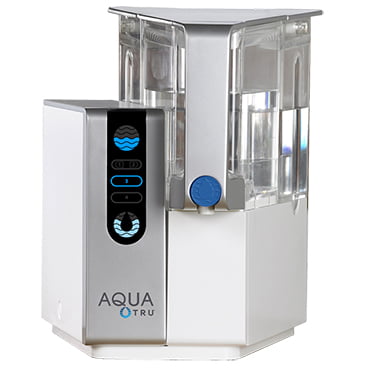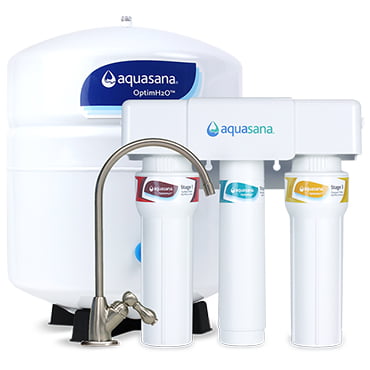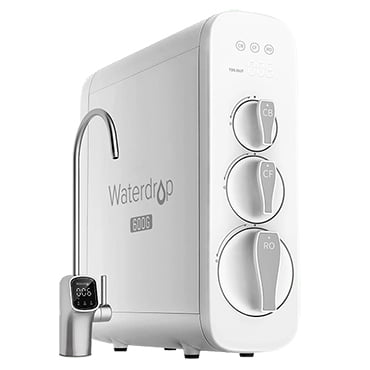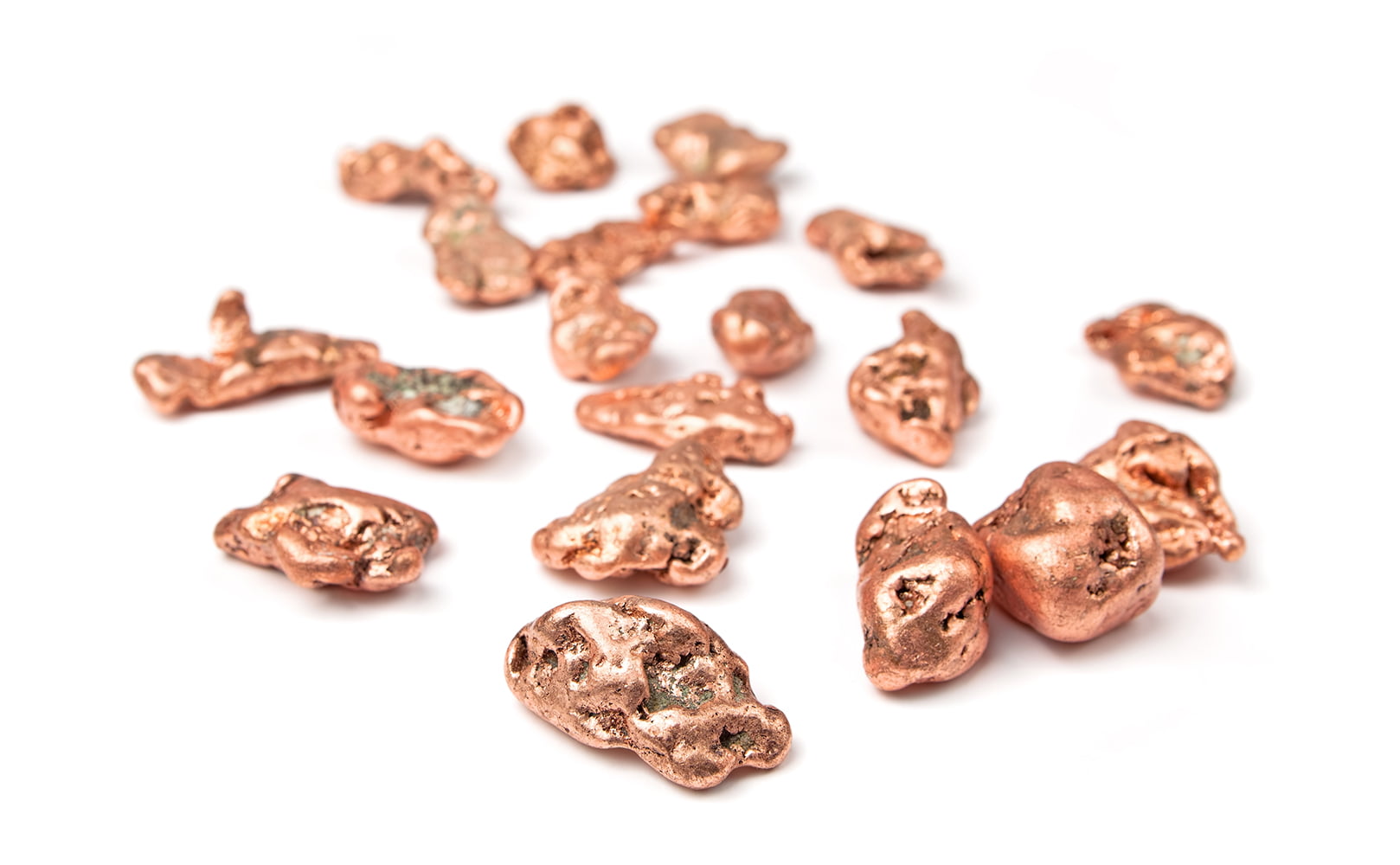Does Reverse Osmosis Remove Copper from Water?
Written by: Alexandra Uta // Last Updated: Jun 20, 2023
This page may contain affiliate links. If you buy a product or service through such a link we earn a commission at no extra cost to you. Learn more.
Copper-contaminated water can damage your health and plumbing appliances. So when people notice copper in their water, they usually try to get rid of it.
Reverse osmosis is constantly marketed as a reliable water purification method. But does reverse osmosis remove copper from water as well?
In this article, we’ll answer all your questions about reverse osmosis and copper removal. We’ll also discuss some other ways to remove copper from water.
Key Takeaways
- Yes, reverse osmosis removes copper from water.
- A good reverse osmosis system removes about 97-98% of copper from water.
- The copper is removed at the reverse osmosis membrane.
Does Reverse Osmosis Remove Copper From Water?
So, does reverse osmosis remove copper from water? Yes, reverse osmosis removes copper from water.
The reverse osmosis membrane stops copper from passing through it, making your water pretty much copper-free.
How Much Copper Does Reverse Osmosis Water Purification Remove?
Reverse osmosis removes up to 97-98% of copper in water. That’s almost all the copper in your water, which means you can trust reverse osmosis to keep your water safe from copper.
The Most Recommended RO Water Filters to Remove Copper
#1 RO System: AquaTru
- Our #1 RO System of All
- Copper Reduction: 95.2%
- NSF-Certified for Contaminant Removal (Up to 99.99% of More Than 80 Other Pollutants Including Chromium 6 (97.2%), Lead (99.1%), and PFAS (97.5%))
- NSF Certifications: 42, 53, 58, 401, P473
- High Filtration Speed
- Installation-Free
- Easy and Affordable Maintenance
Under Sink: Aquasana OptimH2O
- Our #1 Under Sink RO System with Storage Tank
- Copper Reduction: 96.6%
- 5x NSF-Certified
- Remineralizes Water for Improved Taste
Other Ways to Remove Copper from Water
Reverse osmosis is not the only way to remove copper from water. Here are some other effective water treatment methods:
Water Distillation
Water distillation is the process of vaporizing water to separate it from contaminants. A water distiller (used for distillation) boils water in a boiling chamber until it evaporates completely. Since copper does not evaporate, it stays in the boiling chamber while clean, contaminant-free water vapor moves to the condenser.
The condenser converts the vapor to liquid, and it flows through a post-filter into a reservoir.
Distillation removes over 99% of copper from water. The post-filter also removes other particles that may have been present.
Cation Exchange (Water Softening)
In cation exchange, positively charged ions in water (like calcium, magnesium, and copper) are exchanged with harmless sodium ions. The cation exchanger, or water softener, uses resin beads to exchange ions in water.
Boiling?
Boiling is a common way to purify water, but boiling does not remove copper from water.
On the contrary, it increases the concentration of copper in water. This happens because as the water boils, some of it evaporates, leading to a spike in the concentration of copper.
What Is Copper?
Copper is a naturally soft red-brown colored metal found in rock, soil, and water bodies.
How Does Copper Enter My Water Supply?
There are two ways through which copper enters water supplies.
- The first one is through copper plumbing systems. Copper typically dissolves into the water supply when water flows through copper pipes. It gets even worse if the water is hot, acidic, or contains chlorine; in these conditions, the copper pipes corrode quicker, and more copper leaches into the water faster.
- The second way copper can enter your water is through industrial and agricultural activities nearby. For example, chemicals used in agriculture may contain copper, and after they’re used on farmlands. These chemicals seep into groundwater sources and eventually your water supply. But this is rare. Copper enters into water supplies mainly through plumbing systems.
Effects
On Your Health
Copper is not necessarily a bad element. Humans need copper to stay healthy. But the food we eat contains enough copper, so drinking water with elevated copper levels usually only causes an overdose. Excess copper can have dire health effects.
Drinking water that contains copper may cause stomach discomfort, headache, nausea, and diarrhea. In addition, people with health conditions like Wilson’s disease can experience severe effects from copper-contaminated water, like liver and kidney damage.
On Your Plumbing and Appliances
Copper in water also affects your plumbing system and water appliances. Copper-contaminated water corrodes appliances like faucets, water heaters, and dishwashers, reducing their lifespan.
Copper also leaves blue-green stains on appliances, which can be ugly to look at. Since copper leaches from pipes, your plumbing may also start to leak over time.
Safe Copper Levels in Drinking Water
The Environmental Protection Agency (EPA) sets the safe level of copper in drinking water to 1.3 parts per million. Once the level of copper in your water exceeds this threshold, you’re at risk of the harmful effects of copper in water.
How to Test Your Water for Copper
You can buy a test kit that detects the presence of copper in water. The color indicator on the kit will confirm if your water contains copper. Alternatively, you can take your water sample to a certified laboratory for testing. The test will reveal the amount of copper in your water and other necessary details.
A third option is to request your local water test results from your municipal water supplier. The results will help you know if the water in your area contains copper, but you cannot be sure if the copper is from your home plumbing.
How to Lower the Chances of Copper Contaminating Your Water
Many homes are prone to copper contamination. Here’s how to reduce the chances of copper contaminating your water:
Use Non-Copper Plumbing
If the copper originates from your plumbing system itself, you could either switch to non-copper piping like PVC which is going to be an expensive endeavor, or you could try to treat your water so that it is less acidic and contains less chlorine. For the latter option, look into whole house carbon filtration and calcite filters.
Water Softeners
If your plumbing system is not what’s causing elevated copper levels, you could install a water softener to reduce copper concentrations at the point of entry. This will provide you with copper-free water throughout your entire home.
Whole House RO Systems
Whole house RO systems effectively remove copper from water and prevent contamination.
However, the filtered water is highly corrosive. As such, if it flows through copper pipes without any post-treatment, you can expect more copper to leach into your water. To use a whole house RO system, you must balance your water’s pH afterwards.
Alternatively, you can use point-of-use (undersink, countertop, or faucet) RO filters. These types filter water at a specific point where needed, and there’s no risk of the filtered water flowing through larger copper pipe sections.
If you have any thoughts about the question, does reverse osmosis remove copper from water, please don’t hesitate to leave a comment below!
Information provided on BOS is for educational purposes only. The products and services we review may not be right for your individual circumstances.
We adhere to strict editorial guidelines. Rest assured, the opinions expressed have not been provided, reviewed, or otherwise endorsed by our partners – they are unbiased, independent, and the author’s alone. Our licensed experts fact-check all content for accuracy. It is accurate as of the date posted and to the best of our knowledge.





